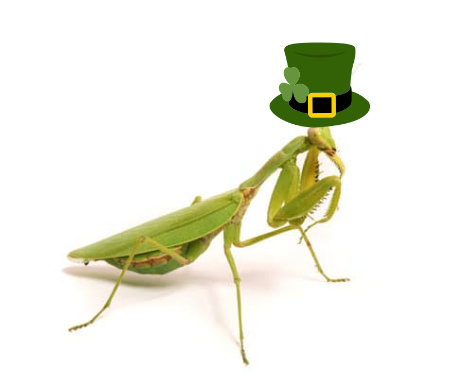In honor of St. Patrick's Day, we'd like to highlight some festive insects that you'll find wearing green for the holiday!
Also known as June beetles or figeater beetles, these large, metallic green beetles are an occasional pest of ripening fruit. While mating, adult green fruit beetles aggregate and feed on apricots, plums, peaches, and other fruits. Their larvae are large (1-2 inch) white grubs that may be mistaken for other white grubs that can damage lawns. Green fruit beetle larvae feed on decaying organic matter instead and are often found in compost piles.
Adult Say stink bugs and southern green stink bugs feed on a wide variety of fruits, vegetables, and nuts. They can cause significant damage to fruits and sometimes even venture into homes and buildings.

Mantids are among the largest insects (2-5 inches) in California and are usually brown, green, or yellow. The native California mantid can actually be all three colors throughout its life! Mantids are often referred to as beneficial insects, however they are generalist predators. They will eat aphids, but also honeybees, butterflies, and their mates.
Green peach aphids, potato aphids, green apple aphids, and tuliptree aphids all have two things in common: they are green aphids and we hate finding them on our plants! Aphids in low numbers usually won't damage your plants, but their populations can grow rapidly if left unmanaged. Naturally occurring beneficial insects, like ladybugs and parasitic wasps, can help control aphid populations.